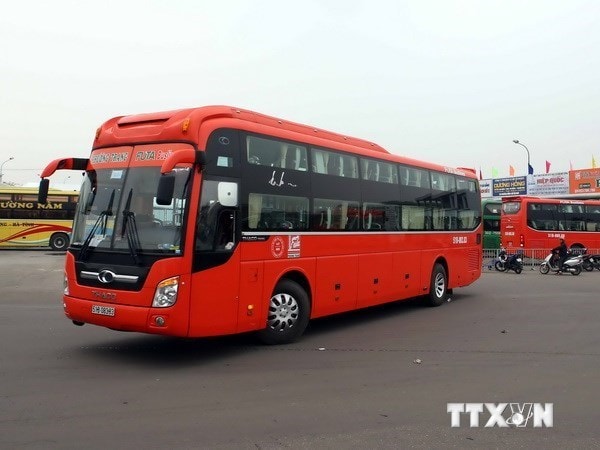Conducting load weighing of sleeper buses to assess safety
The Vietnam Road Administration (Ministry of Transport) has just sent a document to the Departments of Transport to weigh the load of a number of sleeper buses to serve the analysis and assessment of the technical safety conditions of sleeper buses.
 |
| Sleeper buses will be weighed. Illustration photo: VNA |
| RELATED NEWS |
|---|
“The authorities will not impose penalties on the violating passenger vans because this is an inspection to collect data for analysis and assessment of the technical safety conditions of sleeper passenger vans,” General Director Nguyen Van Huyen affirmed.
In addition, the Vietnam Road Administration also requested the Departments of Transport of Hanoi, Hoa Binh, Son La, Phu Tho, Ha Giang, Quang Ninh, Ninh Binh, Thanh Hoa, Nghe An, Ha Tinh, Thua Thien Hue, Da Nang, Quang Nam, Quang Ngai, Khanh Hoa, Dong Nai, Ho Chi Minh City, Gia Lai, Kon Tum, Dak Lak, Lam Dong, Khanh Hoa and Phu Yen to weigh and check from 10 to 15 vehicles.
Before implementing, the General Department of Roads also requires localities to instruct and disseminate to the task force at the Station to inform drivers and passengers on the vehicle about the purpose of vehicle weighing to serve the research of traffic safety solutions for sleeper buses; this work must be done quickly to reduce inconvenience to passengers and drivers.
Previously, at the discussion "Which route is safe for sleeper buses" in mid-September, Deputy Minister of Transport Le Dinh Tho directed that not only trucks, but also passenger buses need to be checked for their load capacity.
Deputy Minister Le Dinh Tho expressed concern about the cargo compartment of passenger vans because improperly loading goods will affect the safety of the vehicle, leaving too much empty space will create an opportunity for stuffing goods. Therefore, passenger vans carrying goods if not controlled will be extremely dangerous.
At the seminar, representatives of the agencies were concerned about how to safely load goods onto sleeper buses, how to arrange goods, and how overloading is associated with accidents when the vehicle turns, on steep slopes. If the goods suddenly shift, it can cause the vehicle to lose its center of gravity, and the driver cannot handle it in time, leading to an accident.
Also in late September, the Ministry of Transport discussed the draft Circular 18 amending regulations on the organization and management of automobile transport business activities. In addition to studying the ban on sleeper buses on level 5 and 6 mountain roads, the Ministry of Transport also restricted the speed of this vehicle on mountain roads with small curves.
Accordingly, double-decker sleeper buses will be restricted from operating passenger transport on level 5 and 6 mountainous roads; and speed will be limited at small-radius curves on level 4 mountainous roads.
In addition, business units must use drivers with at least three years of experience driving vehicles with 30 seats or more to operate sleeper buses; closely check and monitor the technical condition, and regularly monitor online via journey monitoring devices for this type of vehicle.
| Currently, Vietnam has about 4,500 sleeper buses. Of these, most are double-decker buses, with only about 80 single-decker buses. About 3,000 are domestically manufactured and assembled, about 800 are converted, and the rest are imported from China. |
According to Vietnam+


